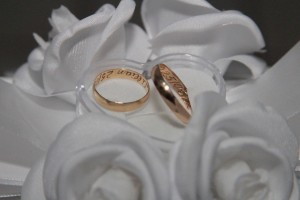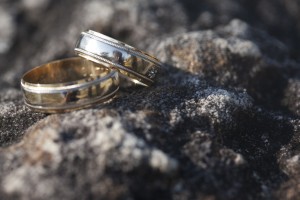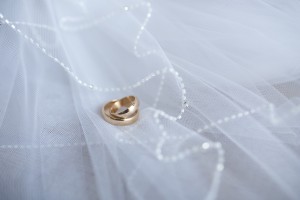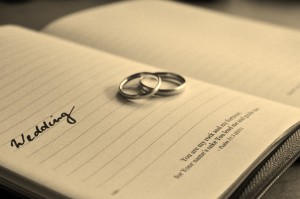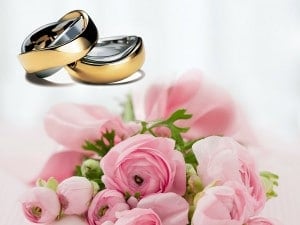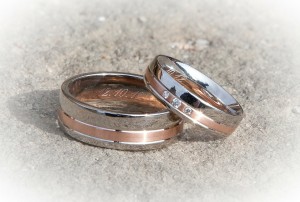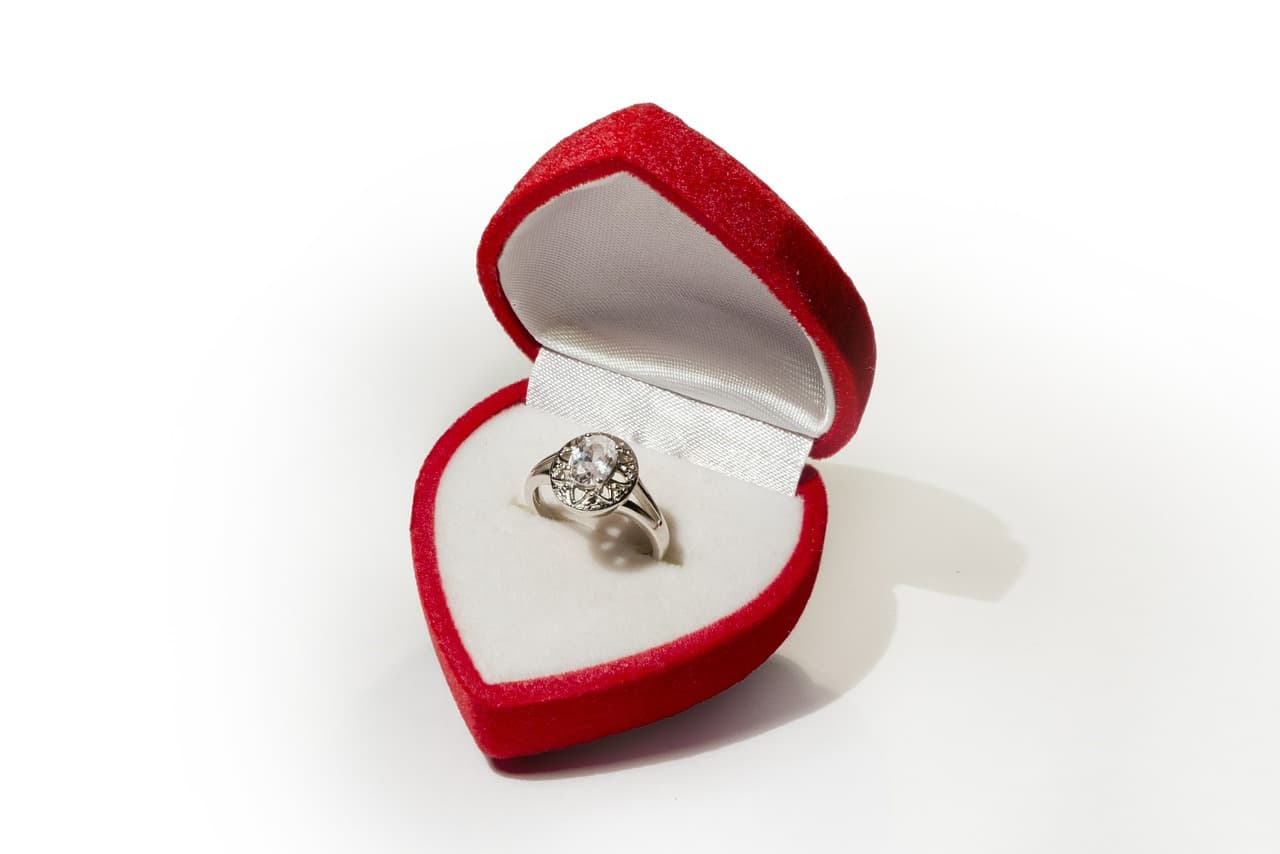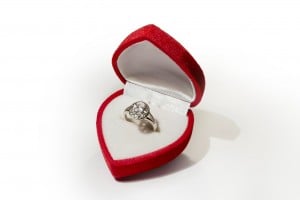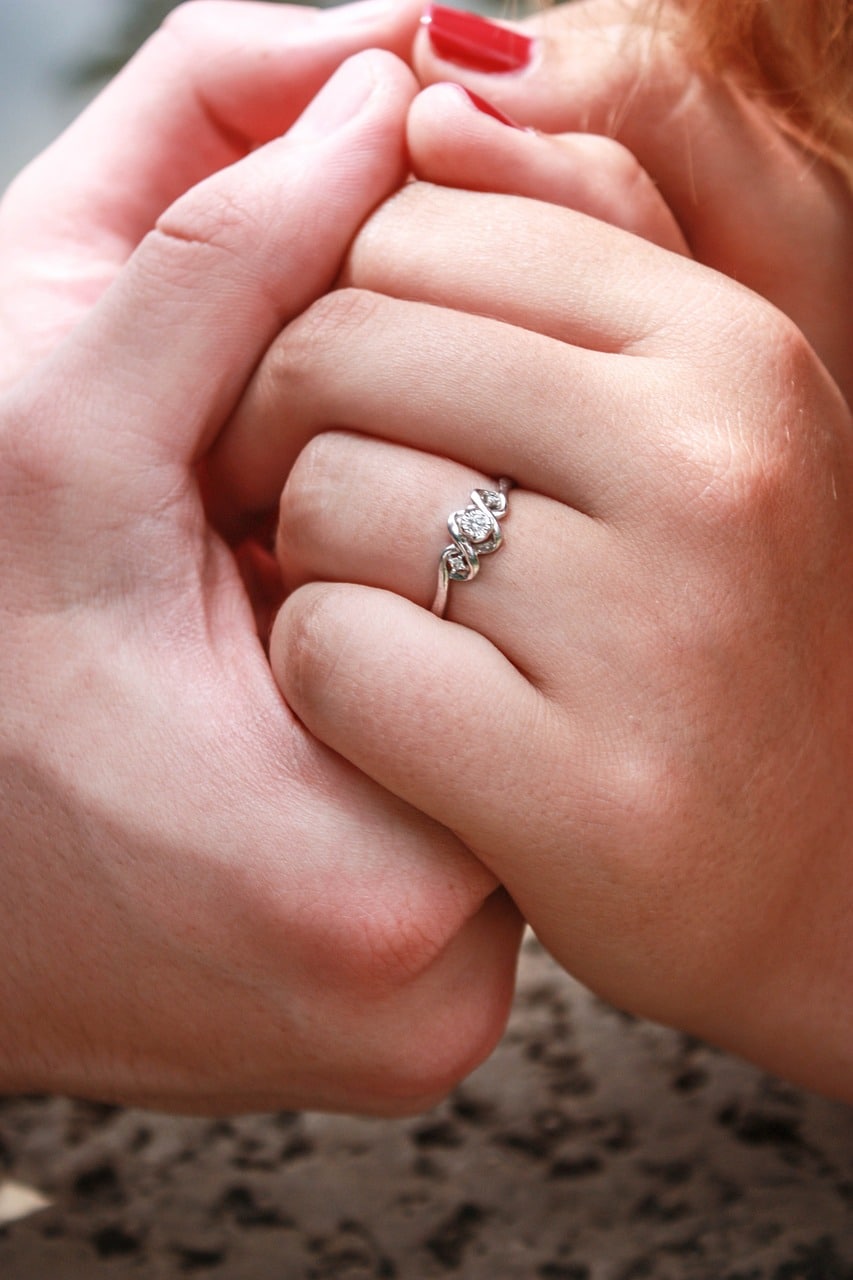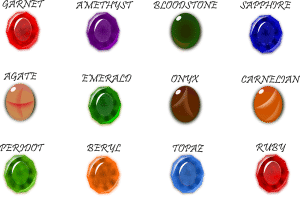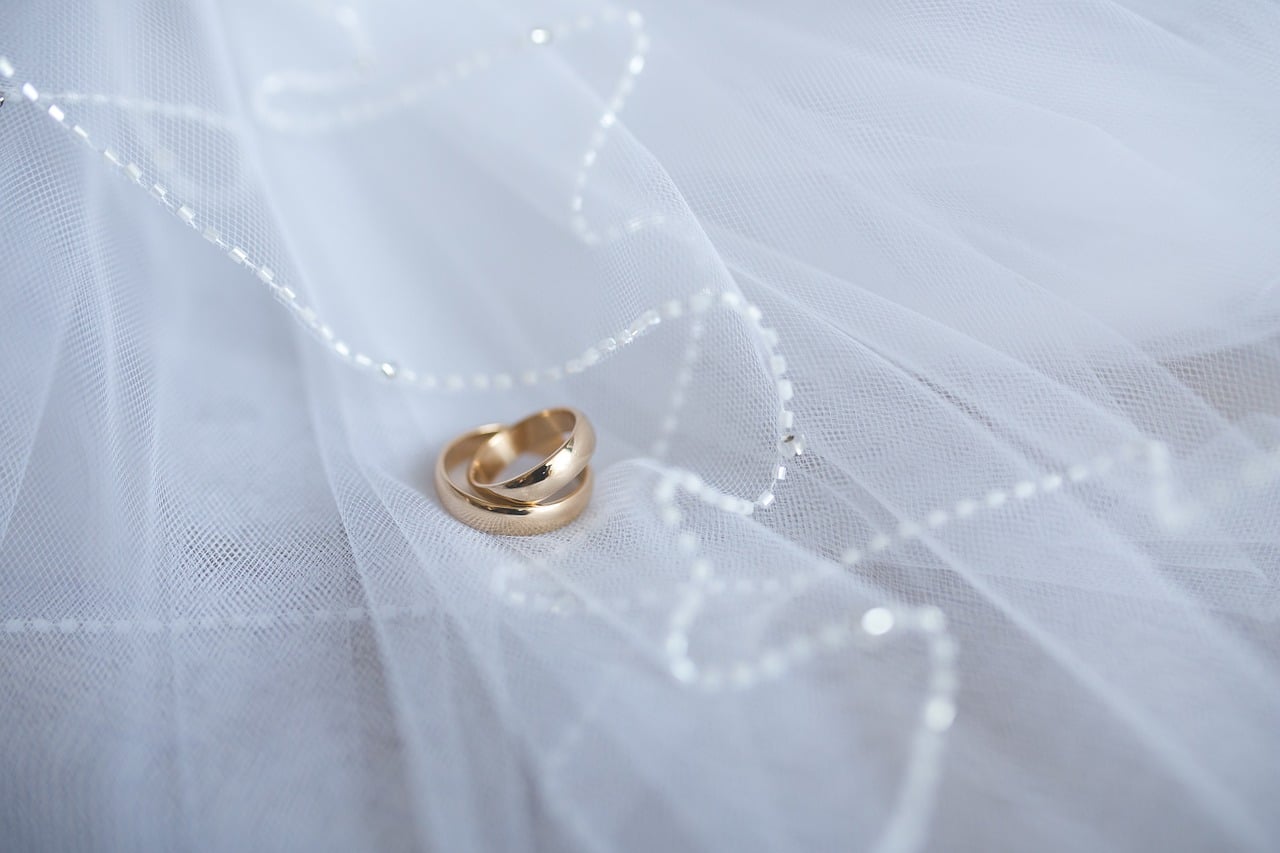
Your wedding ring is the symbol of your union that you will wear forever. So, choose it with care and you will love wearing it in the years to come.
Rings or wedding bands are available in every design, pattern and color. While having so many options allows you to find a unique choice, it can also become very difficult for you to choose. This article will guide you through all the options available to you, so you can narrow down your choices to what you love the most and buy your ring based on it.
Type of metal
Rings can be made from different metals, and the metal you choose will not only determine the look, but will also affect the durability and usability of your ring. So, this is a good place to start. The most commonly preferred metals for wedding bands include the following.
White gold: Gold is alloyed with other metals like nickel or platinum to create a white or silver-colored finish. These rings are usually coated with an outer layer of rhodium for added shine, making the ring whiter. Although this layer may wear off continuously over time, it can be reapplied to regain the original look. White gold resembles platinum but is more economical. The purity of gold in wedding bands can be18ct or less, depending on the amount of gold in the ring.
Yellow gold: The traditional choice for wedding bands, yellow gold is an alloy of gold with other metals that look yellow in color. Like white gold, it is available in 18ct, 14ct and 9ct. It is also available as 22 ct or even 24 ct. However, as the amount of gold increases, the band becomes very soft and, hence, isn’t suitable for daily wear. A ring of 18ct or less would be ideal.
Rose Gold: A shimmery pink colored alloy of gold, these rings contain copper alloyed with gold in a specific ratio to have a pinkish color. The presence of other metals like zinc can alter the color to a reddish yellow or dark yellow, but it has a distinct pink overtone.
Platinum: One of the most expensive options, platinum is a metal that is greatly preferred by couples today. Platinum rings have a white color, similar to that of white gold. The difference however, is that it tolerates wear and tear very well, and is the ideal choice if you want a ring that will stay unmarked even after years of use.
Silver: One of the most budget-friendly choices in metals, silver an rings are usually white, but can also take on oxidized, satin or polished finish. Silver rings look similar to white gold initially, but they are most prone to wear and tear in comparison with other metals. Being a soft metal, every small scratch and mark will show up and cause it to look aged. You may also like to look at palladium sterling silver, which contains palladium in the alloy. The benefit of this choice is that it has better durability and you can still enjoy the original charm of a traditional silver band on your finger.
Titanium: This lightweight gray metal is the ideal choice for people allergic to metals. Titanium is slightly darker than traditional white gold or platinum but is a good choice for its durability and hypo-allergenic properties. It also feels very light on the finger.
Now, let us look at the different ring finishes you can choose from.
Wedding ring finishes
Mirror or glossy: Here the ring is polished to be reflective, and this makes it shine and look brand new till wear and tear sets in.
Matte: The best way to describe a matte surface is to call it misty. The texture of the ring is such that it will be coarse to the touch, and look marked or rugged. You can choose between fine matte and coarse matte, depending on whether you want it to look slightly textured or uneven and visibly marked.
Stardust: Here, the metal’s surface is subjected to high polishing and texturing, so it selectively sparkles. As the name suggests, the effect is similar to that of stardust with a distinct shine, and it has a sophisticated look.
Hammered: Here the ring surface is softly hammered to create dents that reflect light and give it a rugged appearance. The entire surface will be textured in multiple directions due to the uneven hammering effect, and this makes the ring brighter than it actually is.
Sandblasted: The ring is subjected to high pressure and the surface is blasted with sand grains to create a definitive textured finish.
Next, let us take a look at the different ring profiles, as this can greatly impact the way the ring shows on your finger.
Wedding band profiles
Court: This is the traditional style, where the edges are rounded and both the inner and outer faces are curved. The outer surface is gently curved, so it doesn’t look too bulky. When choosing the rings together, many couples usually choose the same design with the groom chooses a wider width for their ring than their bride does.
D-shape: The inside of this ring is flat, while the outer area is rounded. This makes it sit closely on the finger, while the rounded outer surface makes it comfortable as well.
Flat court: These rings are comfortable, as it has a rounded fit on the inner surface. The outer surface, on the other hand, is flat and reflective, making it slim and shiny.
Concave: Distinct from the other types of rings, concave wedding rings have an inward curving outer surface. This gives it a textured look. Although it is an attractive-looking profile, the drawback is that this profile isn’t easy to re-size, so you may have to consider this factor when you choose to go with it.
We have looked at the technical details pertaining to wedding rings. Next, let us move on to the more interesting aspect—Style! The wedding ring you choose should be a reflection of your personal style, as it will be part of your daily attire. We suggest you devote some time to decide which style will still appeal to you, years after you’ve been married. Let us look at the options available.
Wedding ring styles
Plain band: As the name suggests, the plain wedding band has a simple structure with no fancy designing or details. It is the traditional favorite. The plain band can take on any of the profiles and finishes mentioned above, and it is easier to modify or re-size later, should the need arise. If you have a beautiful engagement ring which you will continue to wear along with your wedding band, the plain ring is one of the best options that will sit well with it.
Shaped ring: One of the important factors to consider, when you choose to wear two rings side-by-side is how well they sit together. If your engagement ring is slightly bigger in diameter or has a distinct style, it is important to choose your wedding band in a shape that will go well with it. Shaped wedding rings are contoured to suit the size of your finger, and they come in a variety of shapes. The most common shapes are curved, wishbone or cut-out.
Stone or gem-set: gem set ring You may have a solitaire or precious stone of significant size on your engagement ring, but it won’t hurt to add a little sparkle to your wedding band as well. Diamond set wedding rings are fashionable, with brides either choosing to add a single small gem inlay or having gemstones all over the curved surface of the ring. The stone is usually round or square-cut. However, it is not unusual to find stones of unique shapes, such as a pear-shape or marquise cut. Gemstones other than diamonds, such as tanzanite, sapphires, aquamarine, ruby and topaz are common choices. It is a good idea to have gems set in both wedding bands, as this allows the groom to also wear a sparkling gem that reminds him of his beautiful bride. Gem set wedding bands are usually done in plain or shaped ring designs.
Inlay: Whether you want something unique, or are unable to decide which metal is best, wedding bands with inlays are your best choice. Duo-tone bands with one metal sandwiched between strips of another metal allow you to mix your favorite metal colors. The other option is to add a wooden or ceramic band in between two metal layers or adding a hammered or textured inlay. By varying the thickness of the inlay, you can find a design that is unique. Mixing of white gold or platinum with yellow gold is a popular choice, as it is durable and has a timeless elegance.
Engraved: engraved ring A beautiful and romantic addition to any wedding ring, engraved wedding bands have always been very popular. Most couples engrave a line of text on the inside or outside of the ring. However, you can choose to have anything engraved on your ring. The common choice that most couples go with is to engrave their initials and their wedding date. You can also choose a simple expression or quote like “All my love.” We also found some more interesting ideas for wedding band engravings, such as
- Foreign sayings, if you love the way a phrase sounds in another language
- Religious verses, if both of you are religious
- Connected sayings, where a quote is split into two, with the first half being placed on your band and the rest of it on your partner’s.
- Personal sayings that the two of you use between yourselves
- The name of a place you love, where you first met or the name of the place where you first lived together
- Customized rings with your fingerprint engraved on the inside.
- Symbols or signs that mean something special to both of you.
When you choose to have your wedding band engraved remember that the customization will take time, and you will have to place your order early, so it is ready on time. Also remember to double check your spellings before you place the order, as it cannot be redone if there is a mistake. Keep in mind that there is a limit to the number of characters that can be engraved, depending on how small the ring is. So, plan accordingly.
Here are some general tips to remember when you go wedding band shopping.
Wedding ring shopping tips
#1 Start Early
As with everything wedding-related, start shopping for your wedding band early. We think two to three months before the wedding should give you sufficient time to browse options, narrow down choices, try on rings and zero-in on the one you love. If you choose to have your ring engraved or custom-made, it can take anywhere from one to two months. So, keep this in mind when you go shopping.
#2 Choose a ring that is suited to your lifestyle
Your wedding band will be a regular on your finger throughout your lifespan. So, make sure you choose a metal that will tolerate the strain it will endure. If you actively work with your hands and use sharp instruments or apply a lot of strength and force, choose metals like platinum that can endure it. Also avoid gemstones that can come loose or engravings that quickly trap dirt and age the ring quickly.
#3 Think long-term
Before you finalize a ring that is flashy and very trendy, think of how your choices may change over the years. The wedding band is meant for eternity, so it should be a choice that you will continue to love over the years. Think of how you see yourself ten years from now, and consider whether you will still love this choice then. Classic and timeless designs are better that way.
You should now have all the information you need to start shopping. Have a great time trying on rings and hope you find one that you will always love.
Continue visiting us on Best for Bride for more wedding related tips and advice, and also to shop for all your wedding needs.


